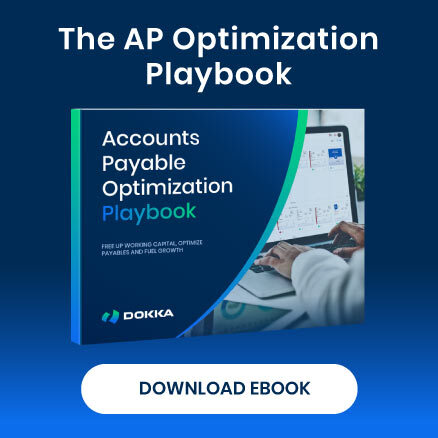As more businesses recognize the benefits of automating AP processes, the market for AP automation software is growing rapidly. With a wide range of vendors offering unique features and capabilities, choosing the best tool to integrate with your ERP system can be challenging.
To ensure a successful integration, consider factors such as compatibility with your existing ERP, ease of use, and scalability. Additional features, like advanced reporting and analytics, compliance tools, and vendor portals, may also influence your decision, as well as pricing.
It’s important to involve all relevant stakeholders in the evaluation process to understand their needs and concerns before making a final decision. Taking a comprehensive approach will help you identify the right AP automation tool to meet the specific requirements of your organization.
To help you get started, check out some of the names below.
5 Best AP Automation Software with Native ERP integrations
1) DOKKA
DOKKA is an AI-powered AP automation software that combines advanced processing power with best in class user interface, in a package made for Small and Medium sized companies. It cuts down the time spent on data entry, approvals, PO-matching and 3-way matching.
DOKKA automates the collection, processing, and archiving of vendor invoices and bills through a centralized system. It gathers invoices from a variety of sources (including email), analyzes them, and creates journal entries for you, so all you need to do is review and click a button to upload the transaction to your ERP.
DOKKA is natively integrated with NetSuite, SAP Business One, Acumatica, Priority, QuickBooks, Xero, and also offers custom API integration.
2) AvidXChange
AvidXchange is a software company that provides automated accounts payable and payment processing solutions for mid-sized businesses, primarily in sectors like real estate, construction, and financial services.
AvidXchange streamlines the AP process into one comprehensive workflow. Vendors submit invoices digitally, approvals are routed according to custom workflows, and payments are processed securely and quickly through the AvidPay network.
AvidXchange is compatible with a variety of ERPs and accounting software, including NetSuite, Sage, Acumatica, QuickBooks, Microsoft Dynamics, MRI, and Rent Manager.
3) Tipalti
Tipalti specializes in global payments, procurement, tax compliance, and end-to-end AP management. This platform is a good choice for companies that work with international suppliers and require comprehensive tax and regulatory compliance, particularly large companies.
Tipalti streamlines the AP process from vendor onboarding through to payment. Using a self-service vendor portal, suppliers can input their information, track payment status, and select their preferred payment method, reducing the administrative burden on AP teams. Tipalti also automates tax form collection and compliance checks, simplifying cross-border transactions.
Tipalti is compatible with Oracle NetSuite, SAP, Microsoft Dynamics, Infor, Acumatica, and many others.
4) Stampli
Stampli is a collaboration-focused AP automation platform that combines AI-driven invoice processing and payments in an easy-to-grasp interface. Stampli’s platform is good for companies looking to centralize communication within the AP process, making it easier for teams to collaborate and resolve discrepancies directly within the platform.
Stampli also automatically captures and extracts data from invoices, assigns it to appropriate workflows, and provides a dedicated communication thread on each invoice for team members to discuss and resolve issues.
Stampli is compatible with SAP, Microsoft, Sage, Oracle and QuickBooks and many other ERPs.
5) Nanonets
Nanonets is an AI-driven document processing tool that extracts and classifies data from documents, including invoices and receipts, for use in accounts payable automation and other workflows.
Using machine learning models, Nanonets automatically recognizes and captures key data fields, enabling companies to reduce manual data entry and improve accuracy. The platform allows users to train custom models tailored to their document types, enhancing the precision of extracted data.
Nanonets is compatible with popular ERP and accounting platforms, but also with CRMs and workplace apps.
Still not sure which solution is best for you? Check out our list of the 10 Best AP Automation Software Solutions for 2025 to learn more about each vendor and their offerings, or book a demo to see how AP automation works in action.
Disclaimer:
All information presented about third-party products, pricing, or features is based on publicly available sources at the time of writing and is intended for general informational purposes only. DOKKA makes no representations or warranties regarding the accuracy, completeness, or correctness of competitor data. All trademarks and brand names are the property of their respective owners.
We encourage readers to verify details with the respective vendors before making any purchasing decisions.




